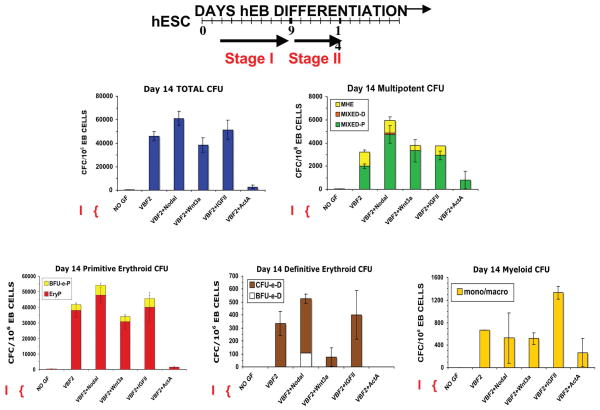Fig. 4. Mesodermal morphogens and hematopoietic growth factors mediate agonistic and antagonistic effects on hEB hematopoietic differentiation potential.
Line 1 (WA01) hEB were cultured in non-adherent serum-free (SF) suspension cultures in the presence of absence of VEGF, BMP4, and FGF2 (VBF2) starting on day 2 until day 9 (Stage I). On day 9, hEB were recultured as single cells onto gelatinized tissue culture plates in SF medium and supplemented with 50 ng/ml of the inductive or inhibitory hematopoietic growth factors Nodal, Wnt3a, IGFII, or Activin A (ActA) for 5 days (Stage II). Single cell suspensions of Day 14 hEB were evaluated for Colony-Forming-Cell (CFC) potential in serumfree H4436 SF methylcellulose containing hematopoietic growth factors. Total CFU, mutipotent CFU (MHE, Mixed-P, and Mixed-D), primitive erythroid (BFU-e-P, EryP), definitive erythroid (CFU-e-D, BFu-e-D), and myeloid (macrophage/monocyte) CFU formation was recorded. In comparison to basal VBF2, further addition of Nodal, a mesoderm inducer, enhanced the generation of all CFC except monocyte/ macrophage CFU. Wnt3a, a downstream effector of Nodal, acted as a moderate agonist during mutlipotent CFU formation, but drastically reduced definitive erythropoiesis. IGFII, another key player in mesodermal differentiation, moderately augmented multipotent CFU and primitive and definitive erythropoiesis. On the other hand, Activin A (ActA) dramacially abolished hematopoietic CFU.

